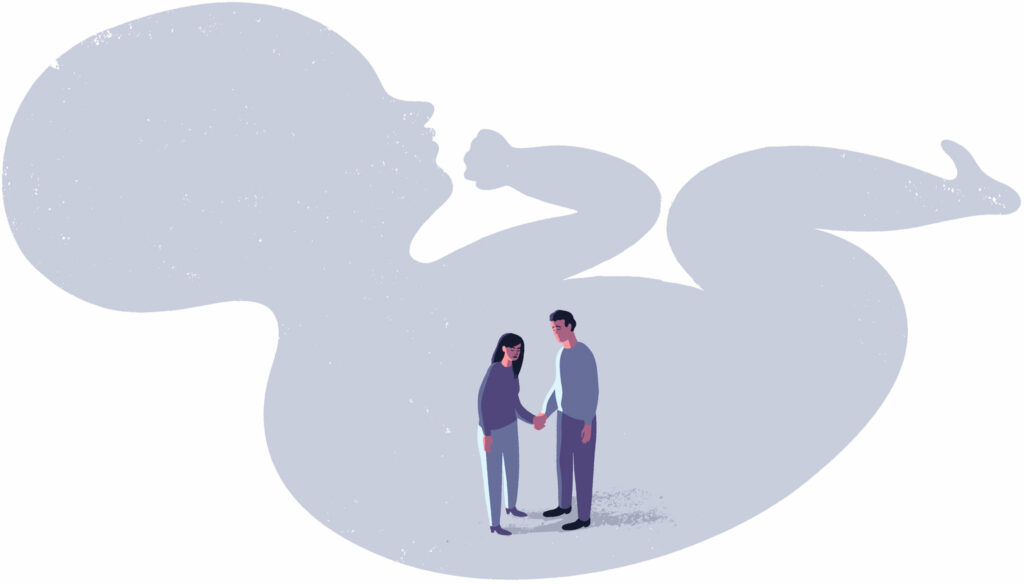Blog Post
Heartbreaking abortion stories in the media are meant to normalize ‘compassionate eugenics’
By Jonathon Van Maren
Last November, I observed a growing trend in mainstream media: heartbreaking stories of parents who, after their pre-born child was diagnosed with a disability or life-limiting condition, decided to have an abortion. In almost every story, the writer made clear that the child was wanted; in every story, the abortion was portrayed as an act of love—a heartbreaking decision made not to avoid facing a child with a disability or a short life, but for the child’s own good. I referred to this trend as “compassionate eugenics,” and it is no accident that we are seeing a flurry of these stories as we approach a possible overturn of Roe.
These stories are heartbreaking but also sinister. Their purpose is to persuade readers that later-term abortion should be available in case a child is diagnosed with an anomaly, or a disability, or a deformity. The logic is simple and brutal: If we ban abortion at any stage, mothers will not be able to have these children killed. The pregnancy may be wanted, but these specific children are not, which is why their parents choose abortion over letting their children live out their short lives surrounded by the love of their families. Abortion is not the only choice, and it is grotesque that it is presented as such.
A new story at the Washington Post this week is a particularly egregious example of “compassionate eugenics.” The 2,000-word column highlights the story of Emma Belle, who discovered at her 12-week scan that her child had a 99% chance of having Edwards syndrome, or Trisomy 18. Her baby would likely die in the womb or live for only a few hours or days outside the womb. She was told that she could either abort her child or allow the baby to live out her short life. Belle and her husband opted for abortion and, as the Post puts it, “named their late daughter Willow.” She then turned to the Internet to process what she’d done, going onto forums known as “TFMR”—“termination for medical reasons.”
After posting about her experience on Instagram, she began connecting with others who had also decided to abort their babies. The Post makes clear in the article that the “right” of these women to have abortions is under threat, with pro-life laws being passed in Texas, Idaho, and Oklahoma—with the spectre of Dobbs looming ever closer. Interestingly, a photo of Belle in the article is captioned “Emma Belle holding the ashes of her baby”—the writer was clearly trapped between a pro-choice worldview that insists abortion doesn’t kill a baby, and simultaneously defending the right of women like Belle to abort babies. Another photo shows a painting Belle hung on the wall “to honor her daughter”—of a little pre-born girl. The truth is hard to hide.
Belle, however, has found purpose in her abortion, launching a group called “@tfmrmamas” along with a website, podcast, and support groups on Zoom. Other women—psychologists, a bereavement doula, a social worker—are joining her. The goal—which is, according to the Post, being achieved—is to connect women around the world to discuss their experiences. Many struggle with the fact that they grieve their babies, but also know that their babies didn’t die—they were killed. This, however, is not presented as cruel, but compassionate—the real cruelty, the writer makes clear, is laws passed to protect babies in the womb. Some women insist that their terminations aren’t actually abortions.
The Post article does not talk about more gruesome aspects of TFMR. My colleague Caroline Heikoop at the Canadian Centre for Bio-Ethical Reform recently wrote an analysis of what is discussed on these forums after discovering that many parents ask for keepsakes of the children after they are aborted. Here is one chilling excerpt:
I read about the different ways in which mothers chose to terminate. Some chose to induce a premature live birth, knowing their baby was too young to survive and not planning to offer them any life-saving support. This way they could still spend time with their baby before he or she died. Others chose the labour route, but a few days prior to birth, their baby’s heart was injected with something that would stop his too-short life. This way, they had a corpse to treasure and express love to, but they felt it minimized the suffering of their baby. Others went the dilation and curettage (D&C) or dilation and evacuation (D&E) route, where their baby was either taken from the womb with forceps or a vacuum, both procedures which tear the baby’s body apart and turn it into a bloody slurry of limbs and other body parts.
READ THE REST OF THIS COLUMN HERE








